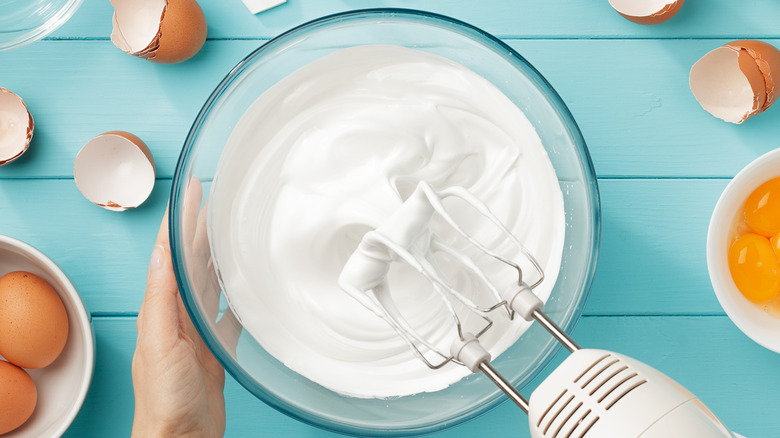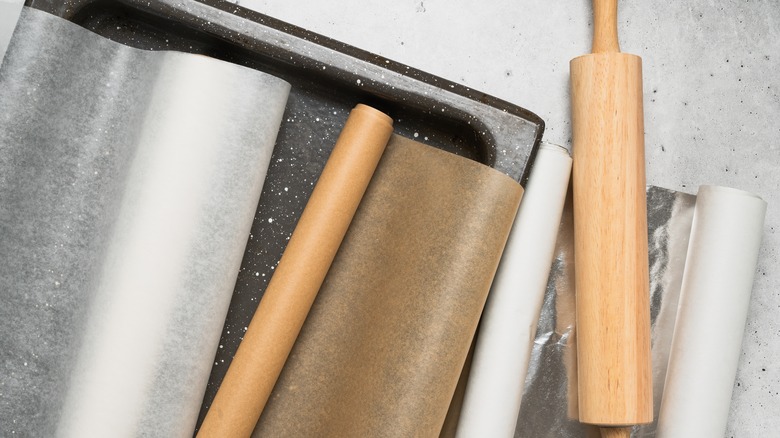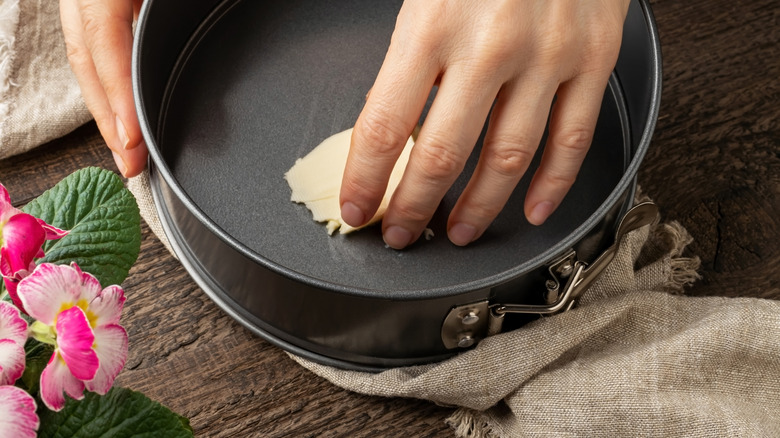The Foolproof Cake Tin Tip For Perfectly Sized Parchment Rounds
A cake made from scratch takes a lot of time, effort, and money to create. And the last thing you want to happen is for that amazing homemade cake to stick to the homemade cake to stick to the cake tin when it comes out of the oven. There are several ways to prevent a cake from sticking once baked, but few are as foolproof as adding a layer of parchment paper to the tin before baking.
Only parchment can be tricky to place perfectly inside of a tin. If you rip off a long strip of parchment, you'll wind up with too-long sides and a wrinkled bottom (which will leave an impression on the baked cake). The best way to effectively line a pan with parchment is to cut a circle the same size as the bottom of the pan creating perfectly sized parchment rounds, which is easier than it sounds if done correctly.
How to cut a parchment circle
A perfectly sized parchment round only requires a pair of scissors and some simple crafting skills. Begin by tearing off a piece of parchment paper slightly bigger than your cake pan. Then, fold the paper into a rectangle and again into a square. Once you have a small square, fold that piece into a triangle moving from left to right, then fold that triangle into a smaller triangle until you have a cone-shaped piece.
Once you have a small triangle (or cone), place the point of the triangle in the center of the cake pan and trim off the excess paper hanging over the edge with scissors. You should wind up with a perfectly sized circle that you can place in a greased cake pan; use cooking spray to adhere the parchment to the pan quickly. (Alton Brown has an excellent illustration of how to cut parchment circles.)
If you have some extra time, cutting a stack of rounds to fit the pans you use most is a great way to prep for any upcoming baking project.
Other ways to grease a cake pan
Parchment rounds are the best way to prevent cake from sticking to any pan, but there are other methods you can use if you do not have parchment. Greasing a pan with butter and then coating it with flour is one way to stop a cake from sticking (move the pan around to distribute the flour evenly until both the bottom and sides are coated with the flour and butter mixture).
You can also use cooking spray to stop a cake from sticking, though this can be trial and error, depending on the spray brand used. With any method (including parchment), you'll want to run a butter knife carefully around the sides of the baked cake before trying to invert the pan — just to be sure that nothing will stick. It's also important to remember to let the cakes cool slightly before removing them from a cake pan (a hot cake has a higher likelihood of sticking).
Don't spend the extra money on pre-cut parchment rounds unless you plan on using the same size cake pans for every baking adventure. It's easy to cut a circle out of a larger piece of parchment and buy a larger bulk roll of paper. Lastly, note that this method won't work on a Bundt pan with ridges instead of a flat bottom, but there's another trick for making sure Bundt cakes come out great — you'll just need to grease the pan with shortening.


